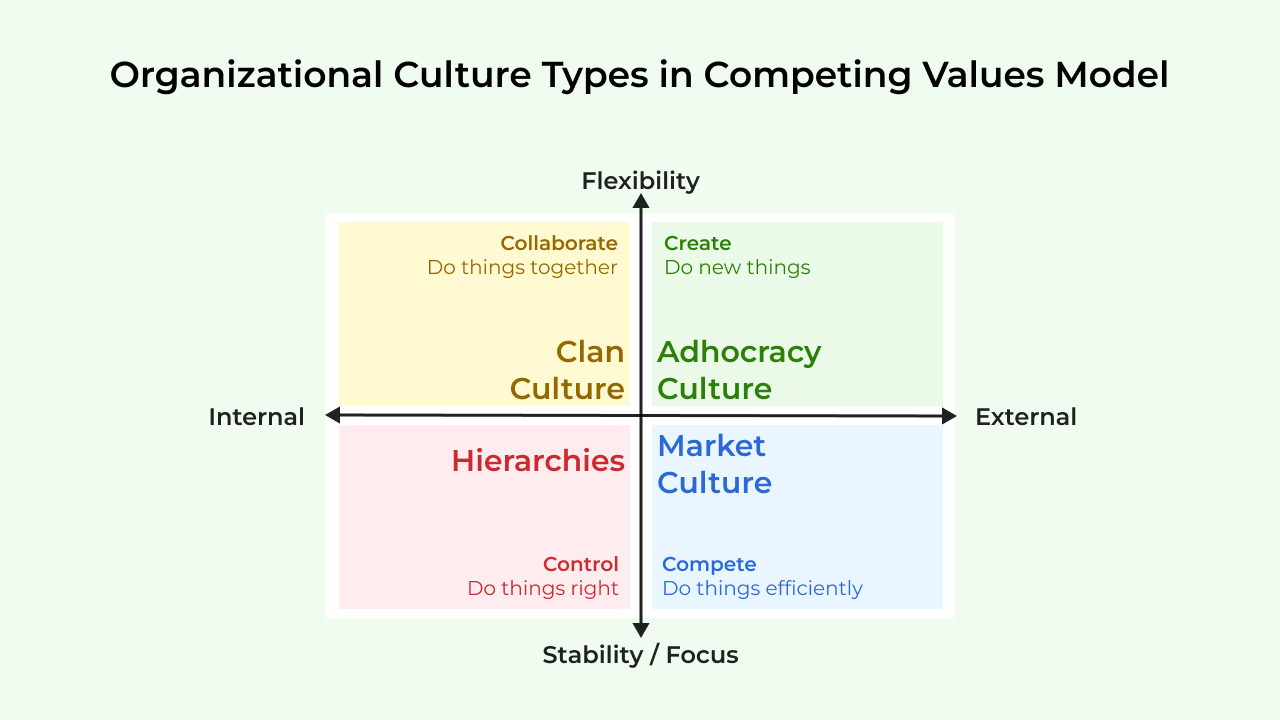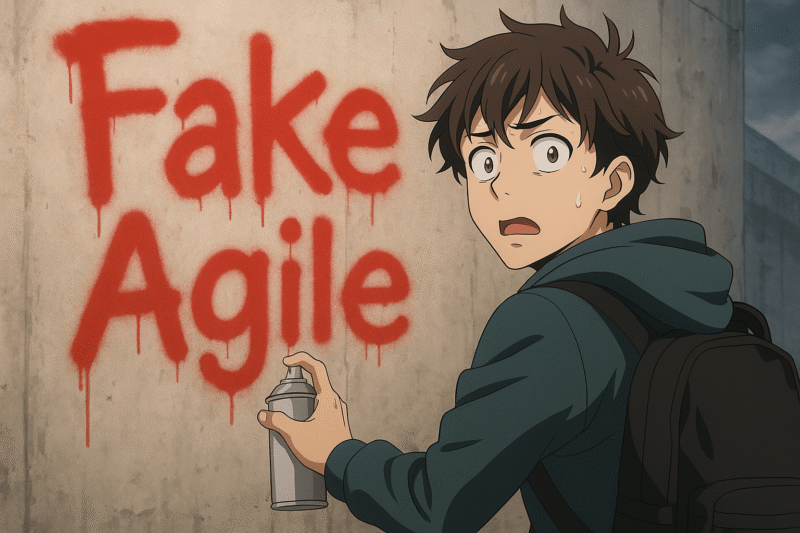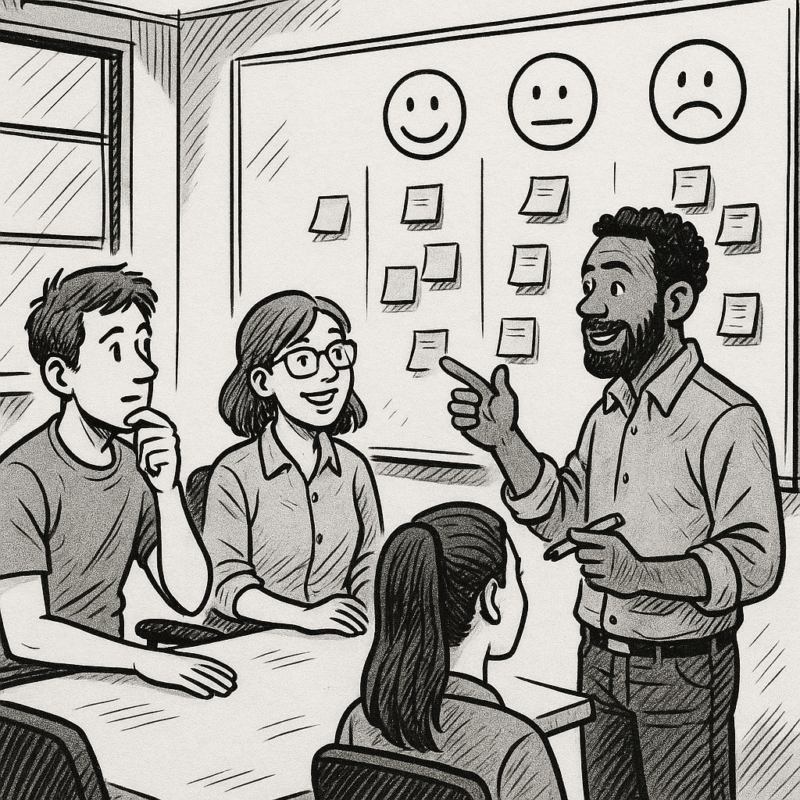Definitions of Organizational Culture
In science and research, there are usually very abstract definitions of organizational culture. That sounds something like this:
“[Organizational culture is a] system of commonly shared patterns of thinking, feeling, and acting, and the norms, values, and symbols that mediate them, within an organization.”
Definition from the Business Dictionary
While this definition is useful for research, there are also internships that define organizational culture in a much more practical way:
“Your culture = Your actions.”
Definition according to Daniel Coyle from “The Culture Playbook”
So which definition is correct? Is it about norms and values, or about action?
The answer becomes clearer if we add a third, more holistic version with the definition of the organizational psychologist Edgar Schein: According to his culture level model, organizational culture consists of three levels: the level of visible behavior, that of values and that of basic assumptions.

So we see that culture is definitely something that can be observed specifically in terms of behavior, but at the same time has deeper levels that are not so easy to recognize and change.
Organizational Cultures Types
When analyzing the different behaviors and values of an organizational culture, one can visually segment the results into types via coordinate systems.
A classical model is the Competing Values Framework as a comparison of the values internal vs. external on the x-axis and stability vs. flexibility on the y-axis as a 2×2 matrix.
This results in the following types of organizational cultures:
- Flexible and Internal: These as “Clan Culture” organizational culture is flexible in cooperation and focuses in particular on internal needs. There are many informal and formal relationships across team boundaries. You're trying to help each other out. In a clan culture, the focus is always: doing things together.
- Flexible and External: These as Adhocracy This organizational culture can be found in customer-oriented and flexible companies. Team members work on behalf of the customer and can effectively initiate changes in the company. This creates a strong customer orientation that relies less on standardized processes or roles. The goal is to get creative and do new things.
- Stable and Internal: Rigid hierarchies with a focus on compliance with internal rules and needs. Here you will find above all (but not only) authorities and government organizations that are equipped with a strictly defined mandate and that make every effort to fulfill this mandate. These hierarchies are designed to do things right.
- Stable and External: These so called Market Organizations create processes and control options to solidify their market orientation. In contrast to adhocracy organizational cultures, the market orientation is given from the top and there is only room for change if this can be achieved through the rigid decision-making process.

From similar pairs of values you can generate further models and gradations of types of organizational cultures . However, looking at real examples of these types of organizational cultures is much more exciting than a theoretical classification of organizational types.
Examples of Organizational Cultures
So let's look at examples of organizational cultures. As we have learned from the definitions, there are things that we can specifically observe and values or basic assumptions that we can at least draw conclusions from our observations.
Organizational Culture in Startups: Echometer
Startups are a special type of organization because they operate in an uncertain and rapidly changing environment. Against the background of these framework conditions, startups usually value an organizational culture that allows quick decisions and a lot of personal responsibility.
The startup Echometer, for example, uses holacracy as a form of organization. Holocracy is a methodology that allows a lot of responsibility to be decentralized, which should enable faster decisions. This type of collaboration suggests that the organizational culture at Echometer is built on the value of personal responsibility.
The core values can usually be found in several places. With Echometer, for example, the working hours of employees can also be flexibly arranged – another indication of the value of personal responsibility. In cultures where personal responsibility is less important, much more control is exercised accordingly.
Organizational Culture in E-Commerce: Amazon
The Organizational Culture at Amazon is characterized, among other things, by a strong focus on performance and competition.
This is expressed, for example, by the fact that managers at amazon formulate their criticism very directly and harshly. Jeff Bezos himself demands in the Amazon Leadership Principlesthat amazon executives should have "relentlessly high standards," even when others find those standards unreasonably high.
Organizational Culture in Big Tech: Google
In contrast to Amazon, Google, on the other hand, has a rather less performance-oriented corporate culture. Instead, the focus at Google is on the innovative power and the necessary psychological safety.
In addition to all goodies such as food, sports and games on the Google Campus, Google offers its employees to invest 20% of their working time in innovative projects of your own interest.
Regulations like these make it clear: Google attaches great importance to innovation and strives to create all the necessary conditions for this.
You may have noticed something about the examples: The successful examples of organizational cultures are usually customer-oriented and flexible in type. Of course, the level of the characteristics and the concrete design on the behavioral level is very different.
But for all organizations that have some catching up to do, the question naturally arises: How can we further develop our organizational culture?
Most Agile Coaches and Scrum Masters run in circles...
...fixing superficial symptoms. Time to use psychology to foster sustainable mindset change.
How to Change Organizational Culture
First of all: Yes, organizational culture can actually be changed. Where to start with this change depends on the concrete starting point and the objective.
The good thing is that everyone can start small: namely with their own actions and the routines in their own team. By changing the behavior level, attitudes and values can also be changed over time.
At the team level, there are Kanban and Scrum fabulous frameworks that can be used at the behavioral level to further develop the organizational culture towards more flexibility and customer orientation.
The ability of teams to change depends largely on the psychological safety of the teams which should therefore be ensured beforehand.
Organizational Design and Transformation
In the case of problems such as recurring conflicts between teams or inertia in making decisions in the organization, however, it is often not enough to only force change at the individual or team level. In such cases, the organizational design must also be considered.
Because many classic forms of organization with technical silos promote behavior that is contrary to modern values such as personal responsibility and innovation. With such symptoms, there is no way around questioning the Organizational Design : Do we really want a division of labor in which every employee is just a small screw in a large gear? Or do we want an organization in which experts from different departments are empowered to independently develop new solutions (keyword “cross-functional teams”)?
The change in organizational design is therefore a transformation on two levels: one strives for a change in the organizational form and organizational culture. These transformation processes can take years, but are often essential for a sustainable solution.
Tools & Techniques for Organizational Development
Many companies have gone through such a transformation in recent years as part of digitization. Various tools and techniques have been developed for organizational development:
Design Thinking
The basis for every organizational development is a common understanding of the organizational values. Behaviors that focus heavily on internal processes and rules often arise in hierarchies. It is important to break out of these old patterns of thought. Design Thinking is a technique to ensure that customer orientation is understood in all areas of the company. Through design thinking, employees learn to better understand the added value of their own work – and above all: to think of their own added value from the customer's point of view.
Open Space
Once this basic knowledge of customer orientation has been established, the question is what the consequences will be for the organizational structure. Open Spaces are an effective tool for this:
With the Open Space It is a tool for participatory organizational development. An open workshop is held with all employees and experiments for organizational development are designed, which are then tried out for 100 days and then reflected on in a second workshop.
Agile frameworks like SAFe and LeSS
Especially companies in the IT sector that already have experience with Scrum at team level often rely on frameworks such as the Scaled Agile Framework SAFe and Large Scale Scrum LeSS when scaling modern, cross-functional working methods. The aim of both frameworks is to allow Scrum teams to work in parallel on adapted backlogs as independently as possible in order to continuously create added value for customers as an organization.
Collegial Leadership & Servant Leadership
While SAFe and LeSS have more of a focus on product and IT organizations, collegial leadership models are established across industries as a means of agile organizational development established.
Collegial leadership is a collective term for ways of working in which responsibility is decentralized in a targeted manner, enabling quick decisions and self-organization. Holacracy and Sociocracy are widely used models for organizational development in this context, with less hierarchical and more self-determined working methods.
In these agile forms of organization there are still leadership roles. The big difference is that leadership is always understood as a service to the teams according to the Servant leadership approach.
Retrospectives ("retros" for short)
Retrospectives are a workshop format that agile teams use to continuously improve their collaboration and develop as a team.
If you systematically introduce retrospectives as a tool for organizational development, it becomes an effective and sustainable bottom-up change process that involves all employees and increases the psychological safety of the teams at the same time.
Echometer is a solution that makes cultural and organizational development measurable and malleable by combining retrospectives, 1-to-1 meetings and pulse surveys. If you are currently developing teams, give it a try:
One-to-one meetings
Many agile managers and engineering managers hold regular one-to-one meetings with their employees.
The aim is typically to provide operational support on the one hand, but also to continuously develop employees on the basis of regular objectives on the other. This is precisely where culture can also be developed in micro-steps.
Specifically, such an exchange is particularly valuable if team members set themselves goals – and if you bring good questions with you.
Relevant questions are good if they ask about the key prerequisites for a satisfied, productive employee. This is where our 1-to-1 meeting tool with a large library of questions comes into play.
The following sample template shows you which questions you can discuss – and, above all, measure in your one-to-one meeting. Try it out without logging in using the button:
⁉️ Mood check (agreement from 1-7): Personal development
- "My work tasks usually progress very quickly, even if external feedback is necessary."
- "If I observe suboptimal behavior, I know how I can constructively draw my colleagues' attention to it."
- "I receive constructive Feedback both to my work and to my personal development."
- "I see an attractive career path ahead of me in the company." #Growth
- "In the last few weeks, I have often been able to use my Strengths at work."
This is what this survey looks like in Echometer:
Conclusion
Elon Musk attaches great importance to the fact that Tesla does not primarily manufacture cars, but "the machines that build the machines (that is, the cars)”. This statement underlines that companies must actively shape and further develop their own value creation. This is the only way companies can produce competitive and innovative products or services in the long term. In this respect, the organizational culture is an important pillar for the long-term success of any company.
This organizational culture includes both abstract values and concrete actions in everyday life. If both aspects are consistently aligned with the goals of the organization, the organizational culture becomes an important change tool. The tools are familiar, so let's go: Let's shape our cultures!
Most Agile Coaches and Scrum Masters run in circles...
...fixing superficial symptoms. Time to use psychology to foster sustainable mindset change.








